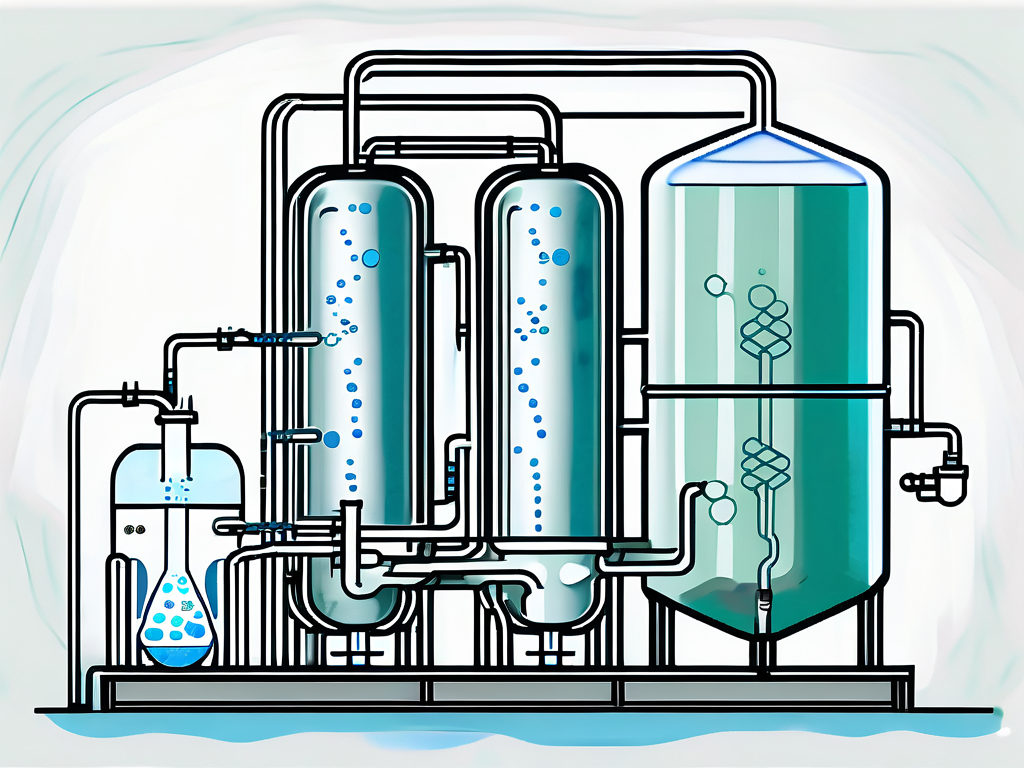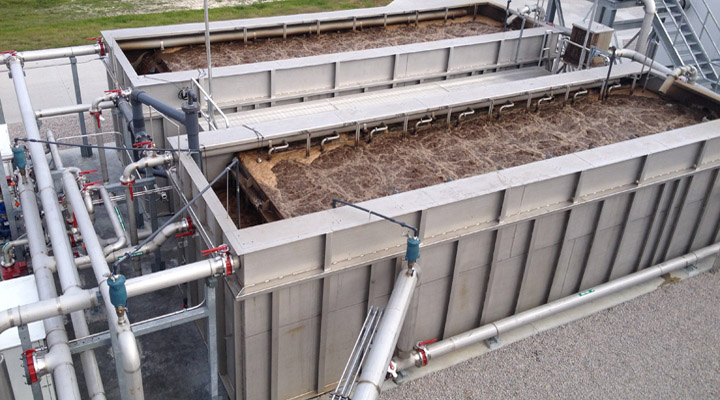Exploring the Environmental Impact of Membrane Bioreactor in Wastewater Treatment
Wiki Article
How Membrane Layer Bioreactors Are Transforming Water Filtration Solutions
The development of membrane layer bioreactors (MBRs) represents a considerable development in the area of water purification, combining organic treatment procedures with cutting-edge membrane layer filtration innovations. This combination not just enhances the high quality of treated effluent however additionally addresses metropolitan room constraints, making MBRs especially suitable for densely booming areas. As worldwide water deficiency heightens, the duty of MBRs in helping with safe and clean water reuse and lasting water management ends up being significantly critical. The implications of this technology prolong past performance-- what chances and challenges exist ahead for its prevalent execution?Summary of Membrane Bioreactors
Membrane bioreactors (MBRs) stand for a substantial innovation in water filtration modern technology, as they integrate biological treatment procedures with membrane layer purification. This assimilation improves the effectiveness of wastewater treatment by making use of microbes to degrade natural toxins while simultaneously using semi-permeable membrane layers to different treated water from put on hold solids and virus.The MBR system commonly contains an organic reactor where the microbial populace metabolizes pollutants, complied with by a membrane purification device that preserves biomass and enables only clean water to go through. This dual performance results in greater effluent high quality contrasted to standard treatment approaches. MBRs can be operated in both set and constant circulation modes, providing versatility in design and application.
They also allow the healing of water for reuse, hence contributing to water sustainability initiatives. Generally, MBRs are at the center of improving water treatment efficiency and high quality, showcasing the possibility for innovative solutions in environmental administration.
Benefits of MBR Innovation
The assimilation of organic therapy with membrane filtration provides numerous advantages for water filtration procedures. Among the main advantages of Membrane layer Bioreactor (MBR) technology is its capability to successfully remove both natural and not natural impurities, leading to premium effluent. The membrane layers function as a physical obstacle, protecting against suspended solids and microorganisms from going through, which improves the general security and reliability of treated water.Additionally, MBR systems require a smaller sized impact contrasted to traditional therapy techniques, permitting much more efficient space application. This portable layout is especially beneficial in urban settings where land is restricted. MBRs likewise demonstrate operational versatility, fitting differing influent high qualities and circulation rates without considerable efficiency destruction.
Additionally, the process supplies improved nutrient removal abilities, specifically for nitrogen and phosphorus, which are crucial for avoiding eutrophication in receiving waters. The lowered sludge production connected with MBR modern technology likewise translates to decrease disposal expenses, making it an affordable remedy in the future - Membrane Bioreactor. In general, the benefits of MBR innovation placement it as a leading option for innovative and lasting water filtration systems, attending to both environmental and financial concerns
Applications in Water Filtration
Applications of Membrane Layer Bioreactor (MBR) innovation in water filtration are varied and impactful, dealing with various therapy requires across multiple fields. MBRs properly combine organic therapy processes with membrane purification, making them optimal for metropolitan wastewater treatment, commercial effluent monitoring, and even drinkable water reuse campaigns.In municipal settings, MBRs are progressively used to boost the quality of treated wastewater, permitting compliance with stringent discharge laws and facilitating the recycling of water for irrigation and non-potable uses. Their compact design likewise makes them appropriate for metropolitan atmospheres where area is limited.
Industrially, MBR innovation is used to deal with process water and wastewater, especially in markets such as food and beverage, pharmaceuticals, and textiles. By efficiently eliminating pollutants and suspended solids, MBRs help sectors minimize environmental influences while recouping beneficial sources from wastewater streams.
In Addition, MBRs are getting traction in decentralized water treatment applications, where small systems can be deployed in remote areas or developing areas. This adaptability enables communities to attain lasting water management services, enhancing accessibility to tidy water while look at these guys minimizing reliance on traditional therapy approaches.
Study and Success Stories

In another example, a fabric manufacturing center in Bangladesh embraced MBR technology to resolve its wastewater challenges. The system find out here lowered chemical oxygen need (COD) levels from 1,200 mg/L to less than 100 mg/L, hence satisfying regulatory criteria and substantially reducing ecological impact.
The College of Cape Town's MBR setup has proven reliable in treating greywater for non-potable reuse on campus. This task not just preserves drinkable water yet likewise works as an instructional version for sustainable methods.
Furthermore, a fish and shellfish handling plant in Norway used MBR innovation to deal with effluents including high degrees of raw material, accomplishing over 90% toxin elimination. These study emphasize MBR technology's adaptability and its vital function in improving water high quality throughout diverse applications.
Future of Water Treatment Solutions
As worldwide water deficiency and pollution difficulties intensify, cutting-edge water treatment remedies are ending up being significantly vital to guarantee lasting accessibility to clean water. The future of water treatment hinges on the integration of sophisticated modern technologies that enhance the efficiency and performance of filtration procedures. Membrane layer bioreactors (MBRs) go to the forefront of this evolution, integrating organic therapy with membrane layer filtering to create high-grade effluent suitable for numerous applications.
Emerging fads such as source recuperation from wastewater, including nutrients and energy, will even more transform treatment centers right into environment-friendly centers. In addition, improvements in nanotechnology and membrane layer materials promise improved efficiency and long life of filtering systems.

Final Thought
In final thought, membrane layer bioreactors represent a substantial improvement in water filtration modern technologies, efficiently combining biological therapy with sophisticated membrane layer filtration. The numerous benefits, consisting of enhanced effluent high quality and lowered spatial needs, make MBRs specifically ideal for city applications. Their function in drinkable water reuse and sustainable water administration highlights their significance in dealing with global water shortage difficulties. Continued r & d will certainly additionally boost the efficiency and fostering of MBR modern technology, guaranteeing a resilient future for water therapy remedies.The introduction of membrane layer bioreactors (MBRs) stands for a significant innovation in the field of water purification, merging organic therapy procedures with advanced Click This Link membrane layer purification modern technologies. As global water shortage escalates, the role of MBRs in facilitating safe and clean water reuse and sustainable water management ends up being progressively critical. They also make it possible for the healing of water for reuse, therefore adding to water sustainability campaigns.As worldwide water deficiency and pollution obstacles increase, ingenious water therapy services are ending up being significantly essential to make sure sustainable accessibility to tidy water. Their function in drinkable water reuse and sustainable water administration highlights their value in dealing with worldwide water shortage obstacles.
Report this wiki page